|
BULB LOG 11 - 15th march 2006
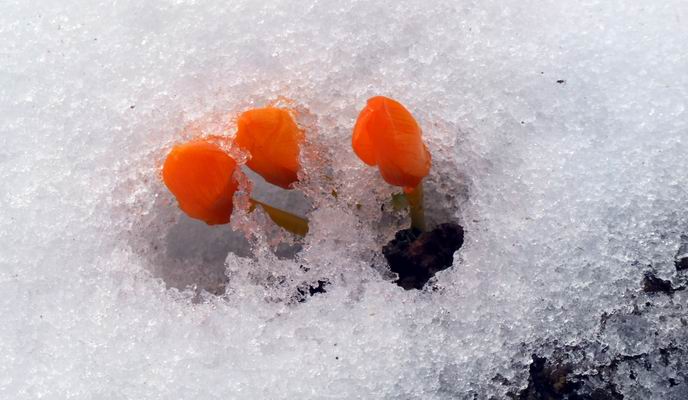
Crocus gargaricus
There cannot be a more vibrant orange in any plant than we see in Crocus gargaricus especially when seen emerging from under the deep blanket of snow that has covered them for the last ten days. They are not totally unscathed by the ordeal, they are all a bit flattened by the weight and the petals are a bit damaged but they will still look decorative for a while and if the sun would shine they will still open their flowers.
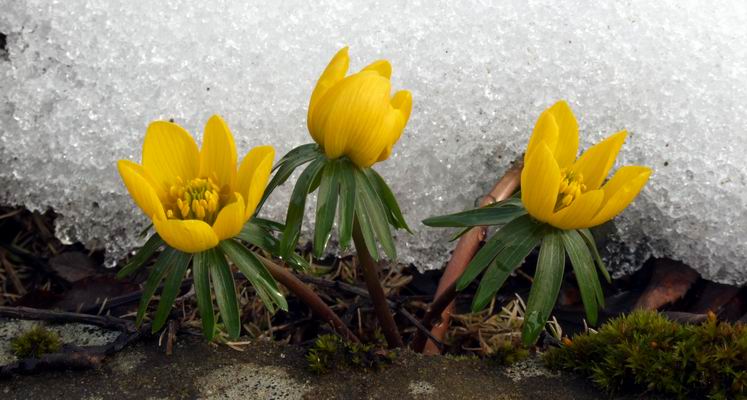
Eranthis 'Guinea Gold'
Apparently undamaged by its ordeal is this Eranthis 'Guinea Gold' at the edge of a raised bed. After I had split and replanted our fish box trough of Eranthis 'Guinea Gold' I found there was one little bit of tuber left lying on my work bench; it did not look very promising so I stuck it in the edge of this bed not sure if it would grow or not - that was in the summer two years ago and now it has three flowers. I have also found three pots of seedlings with Eranthis 'Guinea Gold' flowering in them this is as a result of me reusing the compost for sowing seeds when I repotted the box; they must be able to grow on from tiny bits of tuber that I missed - a very welcome bonus.
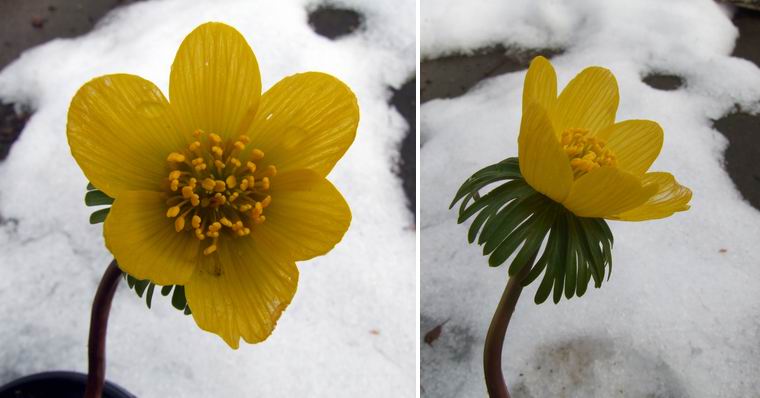
Eranthis cilicica
We have lots of Eranthis hyemalis and its hybrid 'Guinea Gold' but we have never grown the other parent Eranthis cilicica before but I always wanted to. Much to my surprise when going into ASDA to do the weekly grocery shop, I stopped to look at the sorry looking rack of bulbs they were selling in the entrance hall and saw a tray of Eranthis hyemalis but there were two pots of cilicica mixed in with it so I grabbed them both at 99p each, I had a bargain.
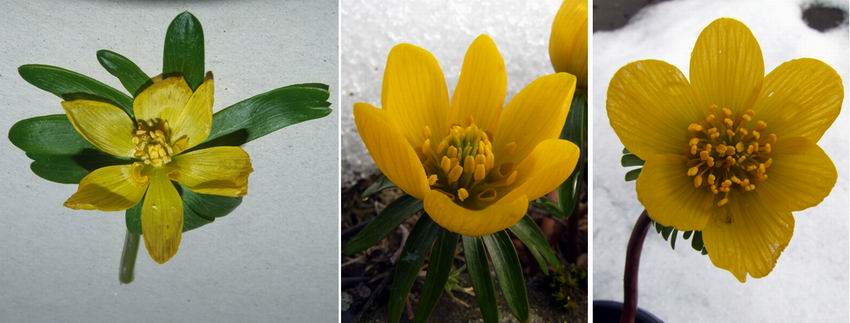
Eranthis family
On the left is a flower of Eranthis hyemalis, recovered from under the snow, in the middle is 'Guinea Gold' with cilicica on the right so you can compare the flowers. Cilicica also has more finely divided leaves than hyemalis. As well as having golden flowers 'Guinea Gold' also has golden tinged leaves when they first emerge.
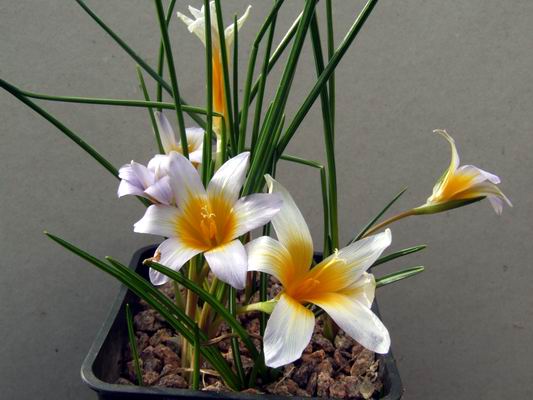
Romulea bulbicodium
I only grow a few of the Romuleas; this one, which I think is R. bulbicodium, propagates itself by popping up in the sand plunge in the bulb house I think it increases both by seed and offsets.
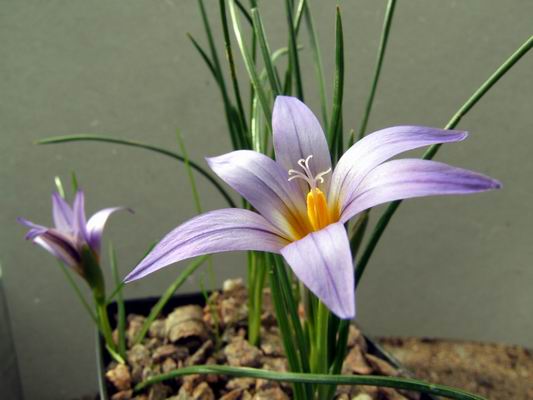
Romulea
Romulea bulbicodium is quite a variable species and while I am not certain I think this one may also be one. Smaller and darker it also increases fairly steadily. Whenever I see pictures of all the beautiful South African species of Romulea I am very tempted to try and grow them. I suspect that they would need better light and summer temperatures than we can offer them here and where would I find the space? I will just have to be content with pictures of these Southern hemisphere 'Crocus' look-alikes.
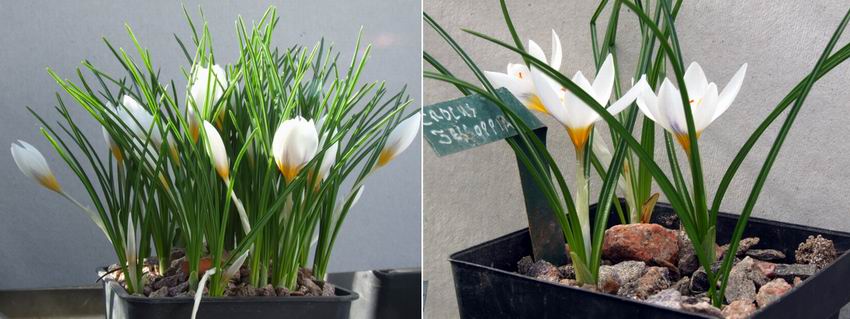
Crocus x jessoppiae
Crocus x jessoppiae is an interesting little crocus thought to be a hybrid but nobody knows for sure. E.A.Bowles states 'C. Jessoppiae is a name attached provisionally in 1924 to a remarkable though small species that appeared among some seedlings and offsets I gave to a neighbour the late Miss Euphemia Jessop.' It is always fascinating to know the origins of our plants. The reason to show the picture is to illustrate my dilemma and the two ways I have to grow bulbs. Since moving over to square plastic pots and to fairly small ones at that, I have to pack them in if I am to increase stocks. How nice the 7cm pot on the right looks with just a handful of flowers that can open with space around them when compared to a stock pot on the left where the flowers are so close together their individual beauty is lost - this is why I have stock pots and display pots.
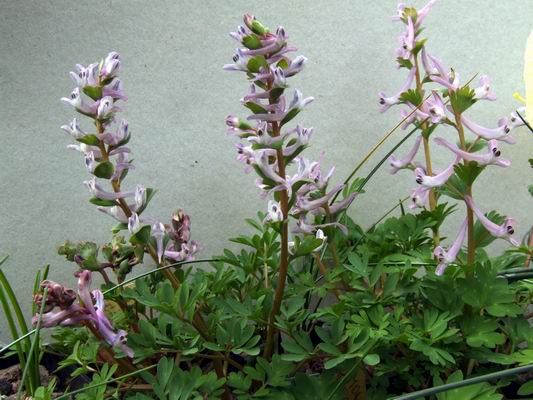
Corydalis wendelboi and paschei
Look carefully and you will see two Corydalis species: the two paler pink spikes to the right are C. paschei and to the left is C. wendelboi. These are from seed sown fresh from our own plants in April 2002, Corydalis is one type of seed that always does best if sown fresh from the plant and not stored - its viability seems to drop off rapidly when stored for any length of time. What I am not sure about is if these two pots are still the true species or have they hybridised to some degree - I will have to study them carefully against the parent pots which are true.

Fritillaria imperialis shoots
Another wintry shot, as the snow receded, the emerging shoots of Fritillaria imperialis appeared looking a bit the worse for wear. Any damage will just be to the outer leaves, the flower buds in the centre of the shoot will be fine. Many of the bulb leaves look like they have been damaged by the freezing conditions just now but it is amazing how well they can recover and that watery frozen look often disappears after a few days.
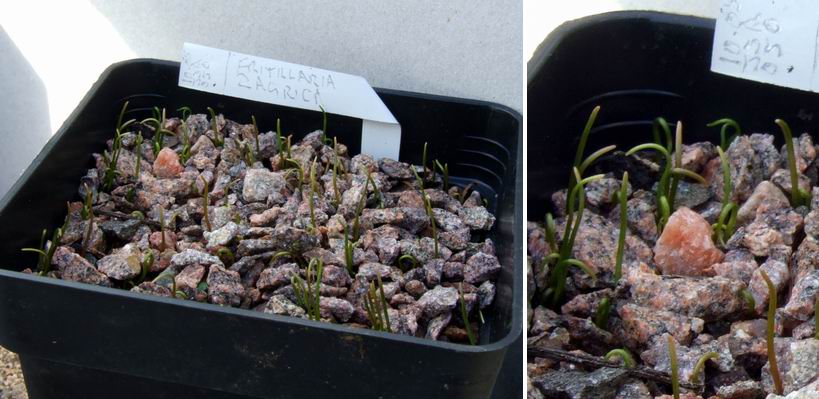
Fritillaria zagrica seedlings
Luckily I had checked the open seed frames a few days before the snow came and discovered a good germination of Fritillaria zagrica seedlings which I had taken into the glass house. Seedlings at this early stage can be damaged or killed by being buried in freezing snow so soon after they sprout and before they can get their first root down into the compost.
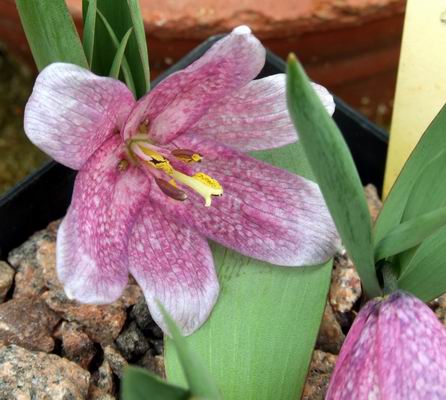
Fritillaria alburyana
Many of the early frits, such as Fritillaria alburyana, are coming into flower now indicating we are entering the frit flowering season. I am off down to Wisley to speak at the Fritillaria Group Meeting on Sunday, 'The Confessions of a Fritoholic' is the title for my talk. I hope to see many frits at their Show with all the best growers in the South bringing their plants together for a mass display of this fascinating genus. Before that I am travelling down to speak to the Cleveland Group of the AGS on Tuesday night on 'The Challenge of Growing Bulbs - hence the earlier than usual log this week.
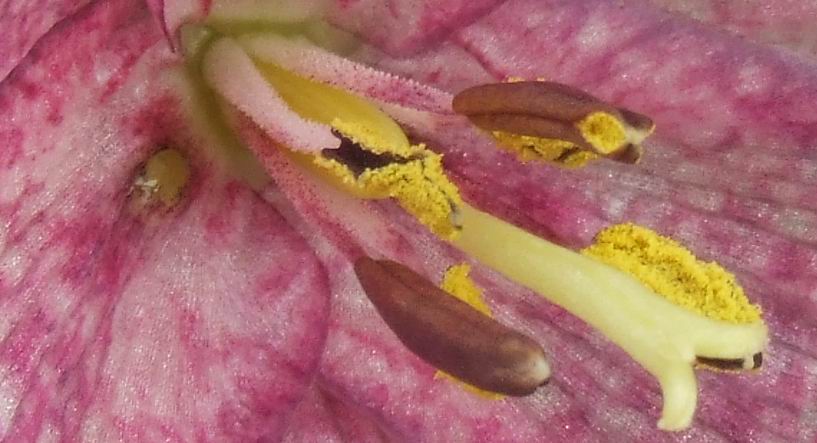
Alburyana full size
I could not resist finishing with a section of the above picture cropped but shown at full size and taken, as all the recent pictures on the bulb log have been, with my new Fuji camera.
^ back to the top ^
|

